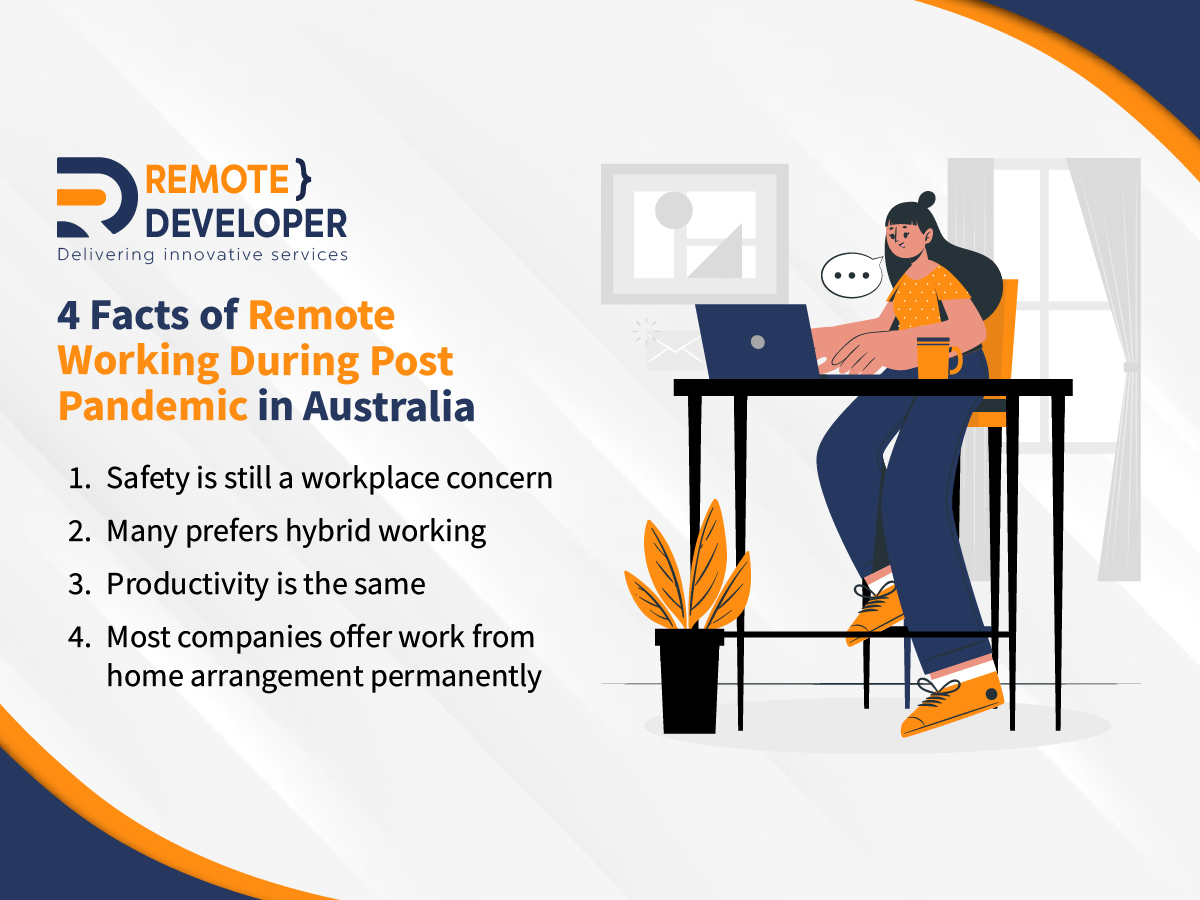The Pandemic has forced us to rethink the way we work. As businesses have to adapt quickly, remote working has become the new normal for many, and it has become a necessity in many countries, including Australians.
But as the COVID-19 virus gradually lost its potency, many companies slowly returned to normal. Many businesses in Australia urge their employees to get back to the office. At the same time, some offer a hybrid type of work setting. Meanwhile, many other corporations still let their employees work remotely in the comforts of their homes.
So, what is the current status of remote working in Australia? To help you with that, this article will tackle the current state of working arrangements in the country and what we should expect after the COVID-19 Pandemic.
Post-Pandemic Situation of Remote Working
The start of the COVID-19 Pandemic has significantly changed how the Australian labor force works. Since the quarantine restriction of the government, many businesses have switched from onsite to remote working. According to the Australian Bureau of Statistics (ABS), more than 40% of employed people have been working from home since August 2020.
This trend has significantly become important to companies and employees. In fact, a study conducted by the University of Melbourne found that almost 70% of Australians want to continue working from home after the COVID-19 Pandemic.
Likewise, in another study conducted by Smart Company, they found out that only 23% of their respondents like to continue working from home rather than returning to the office, commuting five days a week.
4 Facts About Remote Working After the Pandemic in Australia
To further bolster the abovementioned point, here are some facts about remote working in the post-covid era in Australia.

1. Safety is still a workplace concern.
Despite the common belief, COVID-19 is not yet over. The virus is still affecting the world. But with some companies’ back-to-office orders, workplace safety has become a major concern for management and employees.
As businesses reopen and resume their operations, it is important to ensure that everyone is safe from potential health risks. According to Safe Work Australia, employers must assess any other new or changed risks arising from COVID-19.
Likewise, they must take proactive steps to protect their workforce from any harm caused by the virus. This includes providing proper safety protocols, such as social distancing, wearing masks, and regular sanitization of work areas to ensure the safety of their workers in a post-pandemic environment.
2. Many prefer hybrid working.
Some employees in Australia also prefers hybrid vs. onsite work arrangement. Since the Pandemic, more Australians have been looking for ways to achieve a better work-life balance. In a survey conducted by Reinventing Work Report, they found that 50% of Australian workplaces offer hybrid options to staff.
The hybrid approach offers a way for employees to have more control over their schedules. They could take advantage of opportunities that may not be available if they were stuck in an office all day.
3. Productivity is the same.
At the start of the COVID-19 Pandemic, many fear productivity will lower due to remote settings. Many believe that onsite working is far more productive than remote working. However, many studies suggest the opposite. Productivity is the same or even higher when working remotely.
A study published by the University of Chicago found that nearly six out of ten respondents reported higher productivity when working from home. Thus, on average, remote working productivity is over 7% higher than onsite.
With the right tools and strategies, employees can work just as efficiently from home as they can from an office. Companies should strive to create an environment that enables their employees to be productive regardless of location.
4. Most companies offer work-from-home arrangements permanently.
Since the COVID-19 Pandemic, many companies now offering their employees the option to work from home permanently. This change in working arrangements has benefited both employers and employees, allowing them to save on costs and increase productivity.
As a result, many companies are now looking to make this arrangement permanent post-pandemic. In fact, companies in Australia, including Telstra, Westpac, and more, are offering more WFH options for their employees.
By doing so, they can ensure that their workforce can continue working remotely without disruption. Additionally, this also allows them to offer flexibility and convenience for their employees who may prefer to work from home.
Why do Australian Loves Remote Working?
Since remote working was normalised by the Pandemic, it has become increasingly popular with Australian employees and companies. Why is this the case? Well, remote working offers a range of benefits for employers and employees alike, such as the following:
- Allows for greater flexibility in terms of hours and location
- Provides employees with a better work-life balance as they can avoid long commutes and spend more time with family or on leisure activity
- Increased profits due to reduced overhead costs associated with office spaces
- Provide employees with more flexibility and autonomy over their work schedule
- Reduce stress levels by eliminating the need for long commutes or lengthy office hours.
And while some challenges come with it, remote working has allowed Australians to stay connected with their colleagues and clients. With the help of modern technology, Australians can now work remotely without compromising on quality or efficiency. As a result, more and more Australians are now embracing remote work as an alternative.
Are You Still Working Remotely?
In summary, the future of remote working in Australia is huge. We can expect most companies to allow still their employees to work from home or remotely with the virus still affecting people’s lives. Companies and management are still prioritizing the well-being and safety of their employees. And perhaps even after the COVID-19 Pandemic, we will see remote working as a permanent working arrangement.

